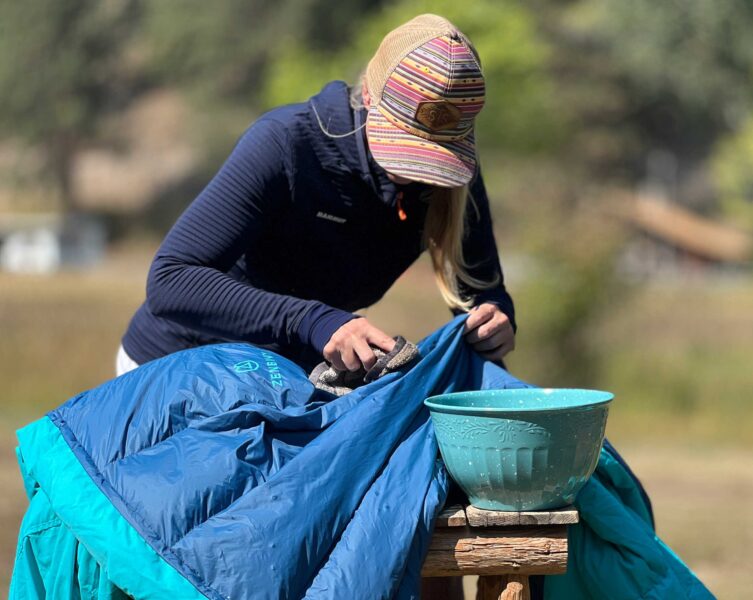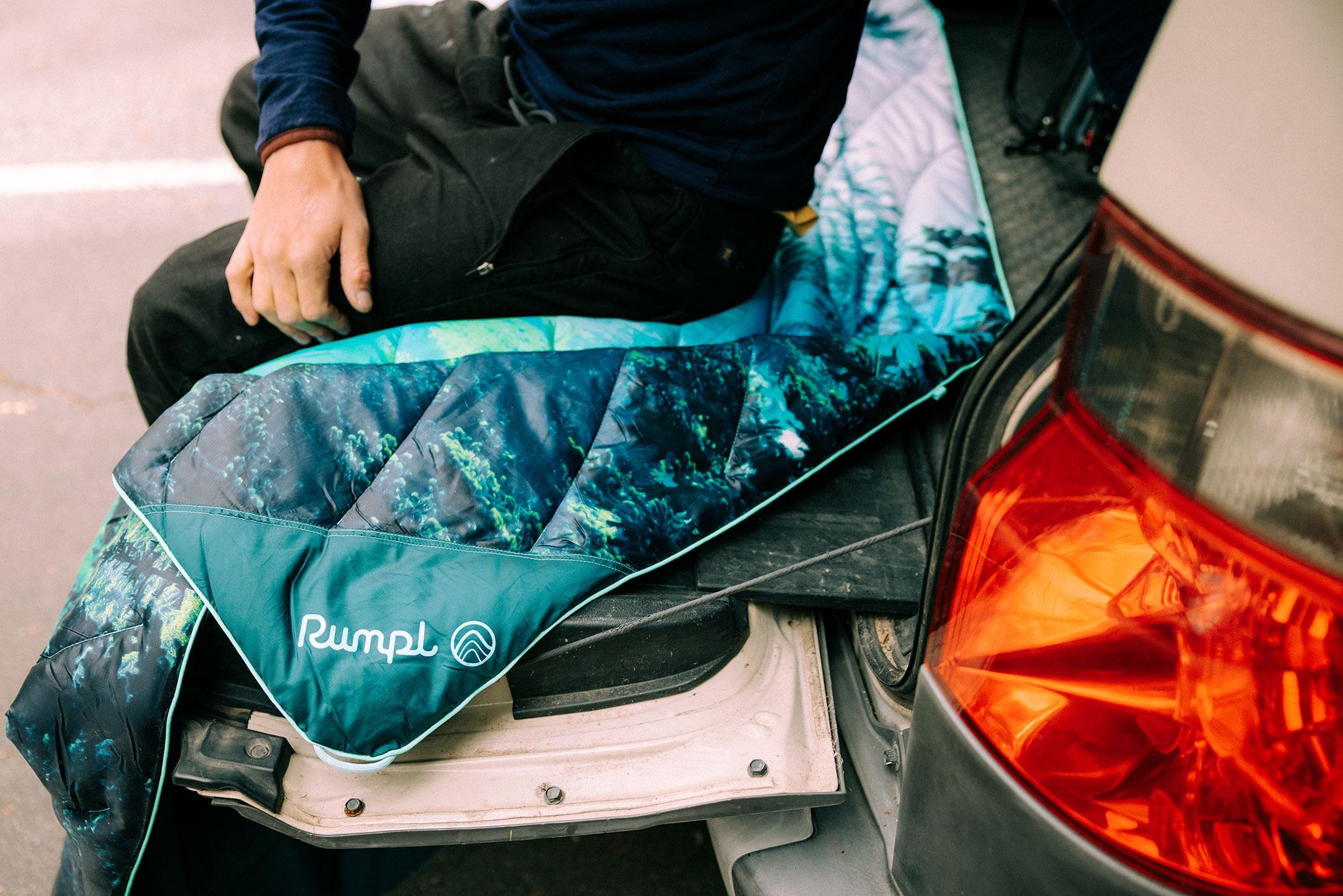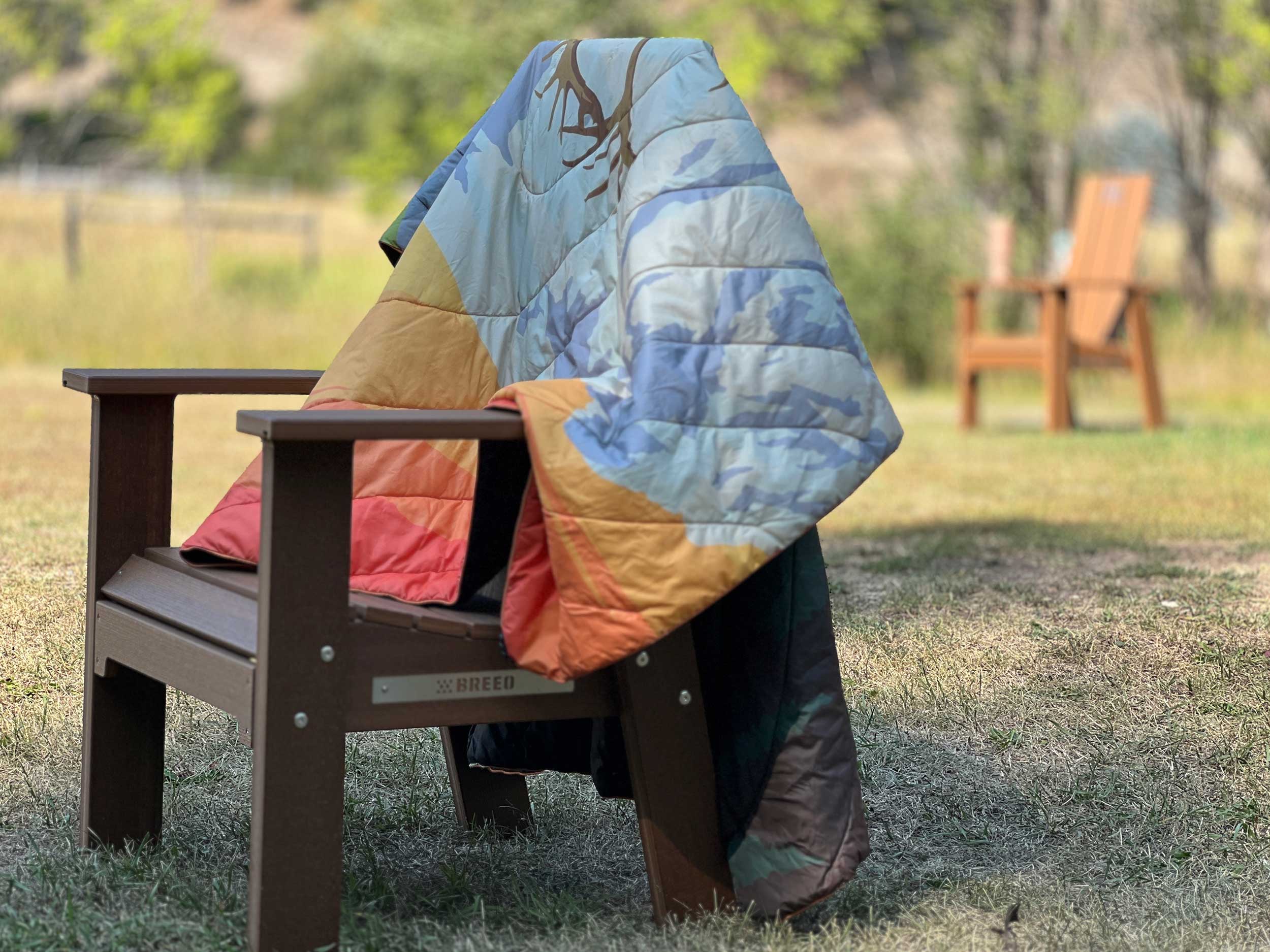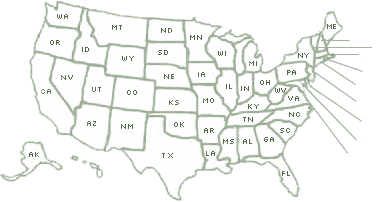
Image by Suzanne Downing
After a camping trip, it’s easy to stash your gear away and forget about it. But taking a little extra time to clean and properly maintain your camping gear will pay off in the long run — extending the life of your equipment and ensuring it performs well. Whether you’re dealing with dirt-covered tents, sweat-soaked sleeping bags, or puffy blankets filled with a campfire smell, proper cleaning is key.
When gear is dirty, it can’t function at its full potential. For example, dirt and grime can clog up the durable water repellent (DWR) coating on your tent, causing it to “wet out” rather than repel water. This means you’ll be less protected from the elements, increasing the risk of getting soaked during a storm.
Imagine spilling coffee on the floor of your tent. If the tent isn’t cleaned properly, the dried coffee could attract more dirt and grit, which can grind away at the tent fabric over time. Left unchecked, this will weaken the material, and you might find yourself dealing with tears or leaks in your shelter the next time it rains.

Image courtesy of Rumpl
Even a little moisture trapped inside your gear — whether it’s your tent, sleep system, or blanket — can quickly lead to mold and mildew growth. Not only does this create unpleasant odors, but it can also damage fabrics. Cleaning your gear regularly helps remove moisture and organic materials that can foster mold growth, ensuring that your gear stays fresh and functional.
You also won’t have to replace your camping gear as often if you take care of it. A well-maintained tent can last for years, while a sleeping bag or blanket that’s cared for can provide many seasons of warmth. Taking a little time to clean and store your gear properly helps protect your investment.
Here are three tips for cleaning your camping gear:
1. Clean Your Tent Regularly
Most tents are built to endure rugged outdoor conditions, but they need regular cleaning to keep performing well. After a camping trip, you should minimally brush off dirt from the outside and brush and shake out any debris from the inside. If you had some light rain overnight or the morning dew is still present on your tent, let it completely dry before taking it down and packaging it up. Dampness can lead to mildew growth and cause the waterproof layer to deteriorate over time.
If your tent is particularly grimy, unpack it and use a very mild soap and water mixture to spot clean stains as soon as you return home.

Image by Suzanne Downing
To thoroughly clean your tent, make a mild soap mixture. For example, cleaning a tent like my Klymit Cross Canyon 2-Person Tent is easy using a mild soap mixture like this one:
- 1 tablespoon of mild, fragrance-free dish soap (like Dawn or Dr. Bronner’s unscented liquid soap)
- 1 gallon of lukewarm water
Mix the soap and water in a bucket or basin. You can wash your tent outdoors if you have a good spot in the grass or wash your tent in a bathtub. This mild solution is gentle enough to clean dirt, grime and stains from the tent without harming its waterproof layers or fabric.
Use a soft cloth or sponge to apply the mixture and gently scrub the tent, paying attention to areas with dirt buildup or spills. Avoid scrubbing too hard, as this can damage the fabric.
Once the tent is clean, rinse it thoroughly with plain warm water to remove any soap residue, and let it dry completely before storing it. One way to dry it is to set your tent up in a shaded, dry area for a day or two before folding it away in a loose, breathable storage bag. You can also hang it outside in a shaded area on a line to dry.
2. Wash Your Sleeping System with Care
Sleeping bags and sleep systems (like sheets and quilts) often absorb sweat, dirt and oils after multiple uses. This can cause buildup and can reduce their effectiveness over time. If you’re sleeping in something with down or synthetic fill like a Zenbivy quilt, it’s essential to wash it properly to maintain its insulation and loft.
Just like washing your tent, when washing a down or synthetic filled quilt or sleeping bag, you’ll want to use a down-specific cleaning product or a mild non-detergent soap. For synthetic quilts, you can opt for a tech wash designed for high-performance fabrics or stick with a mild non-detergent soap. Brands such as Granger’s and Nikwax offer excellent options for both down and synthetic materials.

Image by Suzanne Downing
Down quilts become much heavier when wet due to the down inside the baffles absorbing water. The fabric and baffle structure can tear if handled too roughly. Zenbivy engineers advise being gentle and supporting the weight of the quilt as you move it to prevent damage. With a bit of care, your quilt will be fine — just take it slow and be cautious.
What to avoid: To make sure you’re not damaging your sleeping bag or down quilt, avoid bleaching, dry cleaning, wringing, twisting, using fabric softener, ironing or wash in a top-loading machine. The fabric could stain, tear, and the down clusters could become stuck together — making your sleeping bag the opposite of cozy and warm.
The best way to maintain the cleanliness of your down quilt or sleeping bag throughout the year is to “freshen” it regularly. Washing it in a front-loading washing machine (with the right soap) can help keep your quilt clean and odor-free without the hassle of handwashing or deep cleaning. After washing, air-dry the quilt by hanging it up, or tumble dry on very low heat with dryer balls to help fluff up the insulation.
3. Wash Your Camping Blankets Regularly
Camping blankets like the Rumpl’s Original Puffy are popular for camp comfort. But like sleeping bags, your camping blanket also needs regular cleaning to maintain its insulating properties and keep the campfire smell at bay. After use, you can spot clean smaller stains with a mild soap and water mixture. If your blanket is due for a full wash, use a front-loading machine with cold water and a gentle cycle.

Image by Suzanne Downing
Again, just like washing your tent and sleep system, opt for using a mild detergent. You’ll also want to air dry your camping blankets or dry them on low heat with dryer balls. If you’re hanging your blanket outside, avoid direct sunlight during drying to protect the blanket’s outer shell.
Keeping your camping gear clean and well-maintained ensures it’s always ready for your next adventure. Follow these simple steps to prolong the life of your tent, sleep system and blankets.
Suzanne Downing is an outdoor writer and photographer in Montana with an environmental science journalism background. Her work can be found in Outdoors Unlimited, Bugle Magazine, Missoulian, Byline Magazine, Communique, MTPR online, UM Native News, National Wildlife Federation campaigns and more.
 Your Privacy Choices
Your Privacy Choices

